|
Sunday:
May 30, 2004 | |
0010 GMT |
 |
Double stars emerge as heavyweight champions
About 20,000 light-years from Earth, two massive stars grapple with each other like sumo wrestlers locked in combat. Both giants, each weighing in at around 80 times the mass of our Sun, are the heaviest stars ever. They orbit each other every 3.7 days, nearly touching as they spin on the celestial stage.
 FULL STORY FULL STORY
 |  |

|
 |
|
Saturday:
May 29, 2004 | |
0311 GMT |
 |
Moon tells of unexpected Earth climate changes
Scientists who monitor Earth's reflectance by measuring the moon's "earthshine" have observed unexpectedly large climate fluctuations during the past two decades.
 FULL STORY FULL STORY
 |  |
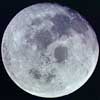
|
 |
Making black holes go 'round on the computer
Scientists at Penn State have reached a new milestone in the effort to model two orbiting black holes, an event expected to spawn strong gravitational waves.
 FULL STORY FULL STORY
 |  |

|
 |
|
Friday:
May 28, 2004 | |
0347 GMT |
 |
Raw ingredients for life found around young stars
NASA has announced new findings from the Spitzer Space Telescope, including the discovery of significant amounts of icy organic materials sprinkled throughout several "planetary construction zones," or dusty planet-forming discs, which circle infant stars.
 FULL STORY FULL STORY
 |  |

|
 |

Additional coverage for subscribers:
 VIDEO:
WATCH THURSDAY'S SPITZER TELESCOPE NEWS BRIEFING QT VIDEO:
WATCH THURSDAY'S SPITZER TELESCOPE NEWS BRIEFING QT
 SUBSCRIBE NOW SUBSCRIBE NOW

|
Cassini spacecraft executes crucial rocket firing
For the first time in nearly five years, the Cassini spacecraft's main engine system ignited Thursday evening for a critical course adjustment that will serve as a dress rehearsal of sorts for Saturn orbit insertion July 1.
 FULL STORY - updated! FULL STORY - updated!
 |  |
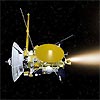
|
 |
Proposed nuclear-powered Jupiter mission defined
NASA has issued its mission design requirements to three industry teams for a proposed mission to Jupiter. The Jupiter Icy Moons Orbiter is a spacecraft with an ambitious proposed mission that would orbit three planet-sized moons of Jupiter -- Callisto, Ganymede and Europa -- that may harbor vast oceans beneath their icy surfaces. The mission would be powered by a nuclear reactor and launched sometime in the next decade.
 FULL STORY FULL STORY
 |  |
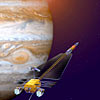
|
 |
|
Thursday:
May 27, 2004 | |
1410 GMT |
 |
Supply ship safely arrives at space station
The International Space Station received its latest resupply ship Thursday as a Russian-made cargo carrier loaded with nearly three tons of fuel, food and equipment successfully docked to the outpost.
 FULL STORY FULL STORY
 LAUNCH STORY LAUNCH STORY
 |  |
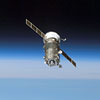
|
 |

Additional coverage for subscribers:
 VIDEO:
PROGRESS 14P DOCKS TO STATION THURSDAY QT VIDEO:
PROGRESS 14P DOCKS TO STATION THURSDAY QT
 VIDEO:
CREW PREVIEWS UPCOMING SPACEWALK DURING INTERVIEW QT VIDEO:
CREW PREVIEWS UPCOMING SPACEWALK DURING INTERVIEW QT
 SUBSCRIBE NOW SUBSCRIBE NOW

|
Opportunity rover begins new mode that adds risk
NASA's solar-powered Mars Exploration Rover Opportunity is beginning on Thursday what controllers expect to be frequent use of an overnight "deep sleep" mode to stretch the robot's power supply. But the new mode increases risk that, without an overnight heater running, one of the six scientific instruments might fail due the cold.
 FULL STORY FULL STORY
 ARCHIVED ROVER COVERAGE ARCHIVED ROVER COVERAGE
 |  |

|
 |
Spacecraft near and far are watching Saturn
As Saturn grows closer through the eyes of the Cassini spacecraft, which is hurtling toward a rendezvous with the ringed world on June 30, both Cassini and the Earth-orbiting Hubble Space Telescope snapped spectacular pictures of the planet and its magnificent rings.
 FULL STORY FULL STORY
 |  |
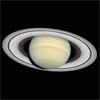
|
 |
|
Wednesday:
May 26, 2004 | |
0242 GMT |
 |
Cosmic powerhouses dwell in humble homes
Quasars are the most brilliant of cosmic fireworks, shining out across billions of light-years of space. However, a recent study done at Gemini Observatory shows that they appear to blaze forth from humdrum galaxies in the early universe, and surprisingly, not from the giant or disrupted ones astronomers expected.
 FULL STORY FULL STORY
 |  |

|
 |
Cassini shows rings and shadows at Saturn
Saturn's rings cast threadlike shadows on the planet's northern hemisphere in this image from the Cassini spacecraft. The picture was taken at a distance of 16.9 million miles from Saturn.
 FULL STORY FULL STORY
 |  |
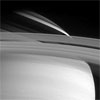
|
 |
Close-up view of comet
This image of Comet C/2001 Q4 (NEAT) was taken at the Kitt Peak National Observatory earlier this month. The comet will remain visible for several weeks with binoculars and small telescopes just after sunset, high in the western sky.
 FULL STORY FULL STORY
 |  |

|
 |
Space station resupply ship successfully launched
A Russian-built cargo freighter loaded with supplies, food, equipment and fuel for the orbiting International Space Station lifted off at 1234 GMT (8:34 a.m. EDT) Tuesday from the Baikonur Cosmodrome in Central Asia.
 FULL STORY FULL STORY
 PRE-LAUNCH PHOTO GALLERY PRE-LAUNCH PHOTO GALLERY
 |  |

|
 |
|
Tuesday:
May 25, 2004 | |
0452 GMT |
 |
Suit problems alter station crew's spacewalk plans
With cooling problems affecting the American spacewalking suits stashed aboard the International Space Station, mission managers on Monday significantly revised plans for next month's critical excursion to replace a failed electronics box in the outpost's orientation system. The station's two-man crew will wear Russian suits and exit through an airlock farther away from the worksite, making the repair job more time-consuming.
 FULL STORY FULL STORY
 |  |

|
 |

Additional coverage for subscribers:
 VIDEO:
OLD PROGRESS CARGO SHIP UNDOCKS MONDAY QT VIDEO:
OLD PROGRESS CARGO SHIP UNDOCKS MONDAY QT
 VIDEO:
CREW INTERVIEWED BY THE ASSOCIATED PRESS QT VIDEO:
CREW INTERVIEWED BY THE ASSOCIATED PRESS QT
 VIDEO:
INTERVIEW WITH PITTSBURGH NEWSPAPER QT VIDEO:
INTERVIEW WITH PITTSBURGH NEWSPAPER QT
 SUBSCRIBE NOW SUBSCRIBE NOW

|
Space station resupply ship set to launch today
A Russian-built cargo freighter loaded with supplies, food, equipment and fuel for the orbiting International Space Station is awaiting launch at 1234 GMT (8:34 a.m. EDT) today from Baikonur Cosmodrome in Central Asia.
 FULL STORY FULL STORY
 PRE-LAUNCH PHOTO GALLERY PRE-LAUNCH PHOTO GALLERY
 |  |

|
 |
Casssini sees smaller moons of Saturn
Two of Saturn's moons -- Prometheus and Pandora -- are seen here shepherding the planet's narrow F-ring in this latest image from the approaching Cassini spacecraft.
 FULL STORY FULL STORY
 |  |

|
 |
Mars lander Beagle 2 was too risky, inquiry concludes
The British Beagle 2 spacecraft designed to search for life on the surface of Mars probably failed because of "programmatic and organizational reasons that led to a significantly higher risk" for the mission, investigators determined. The European Space Agency on Monday released the lessons learned and recommendations for future missions.
 FULL STORY FULL STORY
 |  |
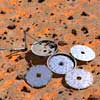
|
 |
|
Monday:
May 24, 2004 | |
0001 GMT |
 |
Starburst eye of a galaxy produces a cosmic shower
Combining images from orbiting and ground-based telescopes, an international team of astronomers has located the eye of a cosmic hurricane: the source of the one million mile-per-hour winds that shower intergalactic space from the galaxy M82.
 FULL STORY FULL STORY
 |  |

|
 |
NEWSWIRE Links to news across the internet
|
 |
Change at NASA Langley inevitable, crucial -- (Hampton Roads Daily Press) NASA Langley Research Center is playing a royal game of catch-up. About 45 percent of Langley's research is aeronautics, true to its history of being the nation's first civilian aeronautics laboratory. But today, NASA devotes only 6 percent of its budget to aeronautics, with a new presidential push to put humans on the moon and Mars.

GAO criticizes NASA's budget 'mismanagement' -- (Houston Chronicle) Congressional auditors continued their criticism of NASA to the U.S. House this past week, saying that confusing accounting is not going to change without a culture shift.
|
 |



